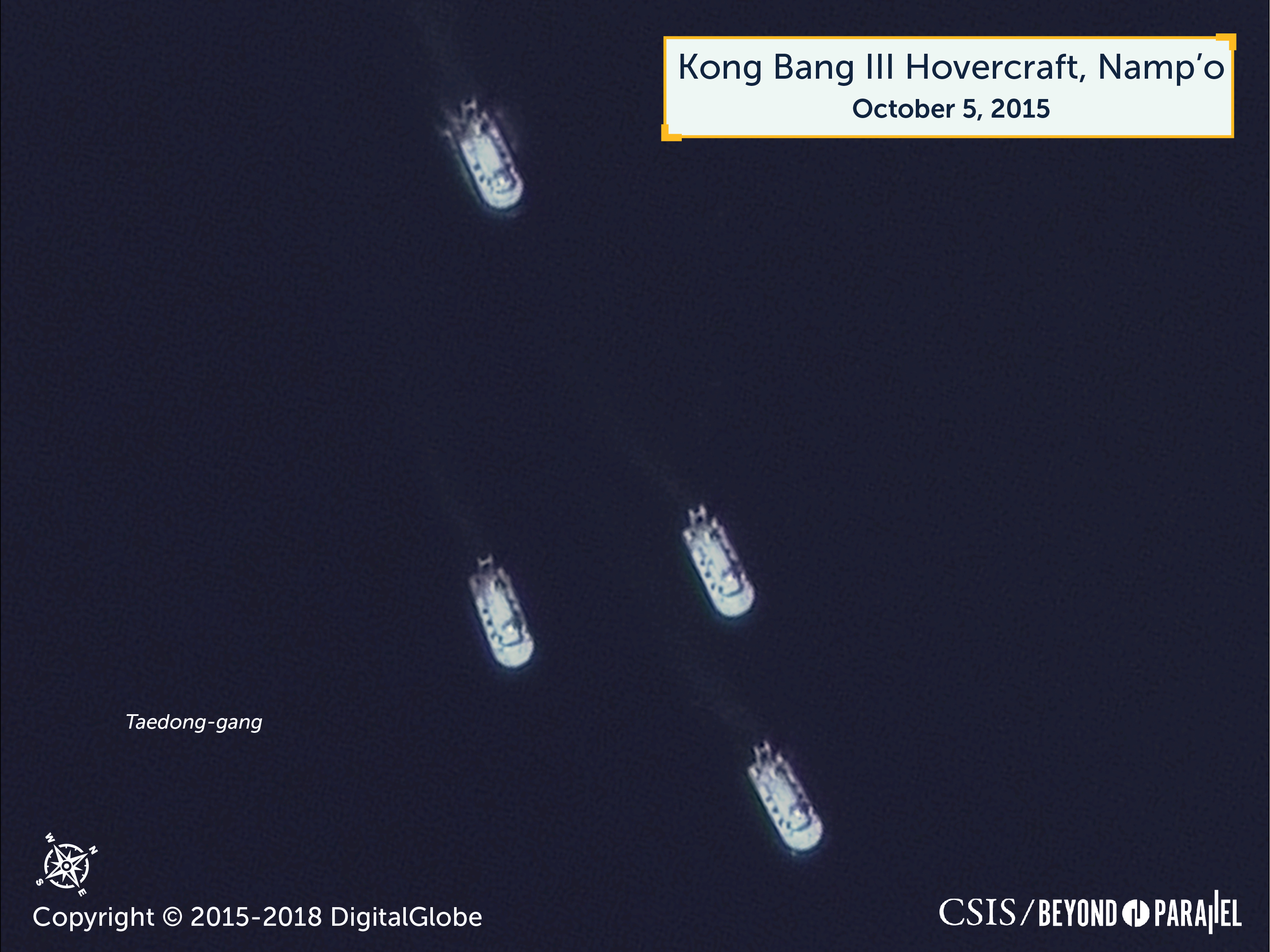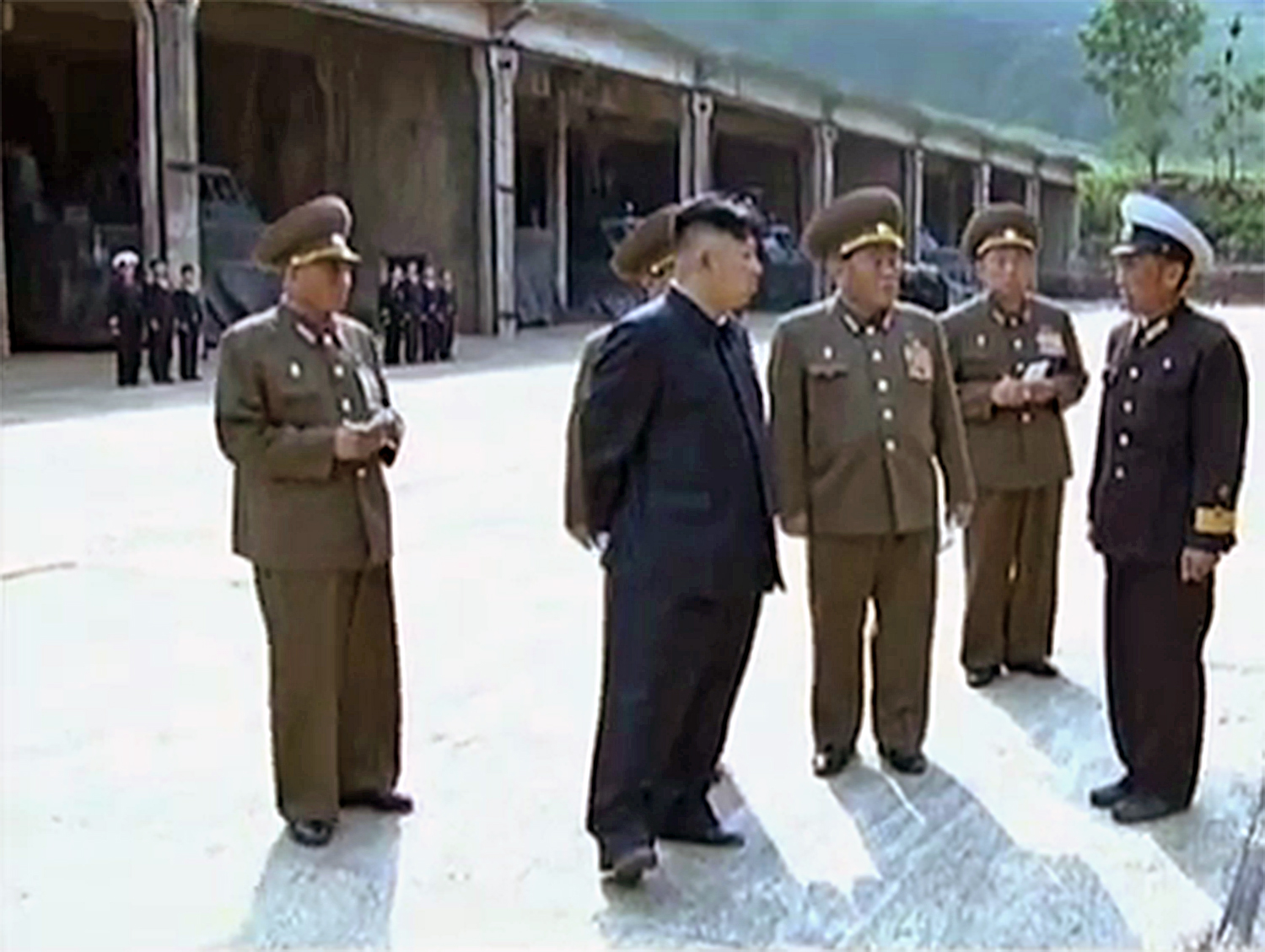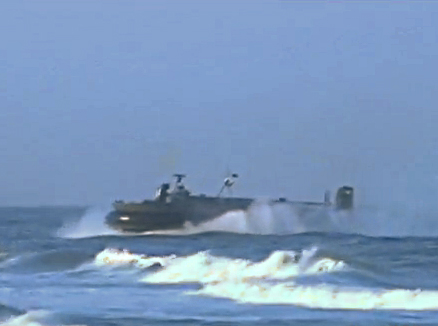
North Korean Special Operations Forces: Hovercraft Bases (Part IV)
North Korean special forces are a critical component of the Korean People’s Army. Within the Korean People’s Army Naval Force, unique sniper brigades exist to carry out specialized missions focused on sabotage and subversion of command and control facilities, reconnaissance, infiltration, and amphibious landings and assaults. As part of a four-part series, this final report provides more details about the development, organization, deployment, and training of North Korean hovercraft units which form part of the Korean People’s Navy (KPN) sniper brigades.
Key Takeaways
- Previous reports found that, due to the restructuring and modernization of North Korean hovercraft bases, special units that support the offensive operations of KPN sniper brigades in both the West Sea and East Sea could present a greater threat to countries in the region.
- In both the East Sea and West Sea, hovercraft units appear to be subordinate to a single amphibious assault command consisting of a headquarters, support elements, a number of landing craft squadrons, and four hovercraft squadrons. According to open source information, the designations of the KPN’s two sniper brigades appear to be the 29th Navy Sniper Brigade (West Sea Fleet) and 64th Navy Sniper Brigade (East Sea Fleet).
- Actions taken by the North Korean leader could indicate the growing importance of these units to North Korea’s asymmetrical military force posture. Kim Jong-un has made it a point to observe or guide amphibious landing exercises each year. These exercises have taken place on both coasts and almost all have included the participation of hovercraft and navy sniper brigades.
Command and Control
As explained in previous installments there is considerable confusion in the open source regarding the organization of the parent units controlling North Korea’s hovercraft units. A declassified Central Intelligence Agency document entitled New East Coast Fleet Naval Command Songjon Pando, North Korea, dated 16 March 1984, however, provides some historical context to this question and may identify the organization that likely served in that role.1
“1. Significance: NPIC [National Photographic Interpretation Center] believes that the newly formed 13th Naval Command (NAVCOM) is at Songjon Pando, and that its mission is agent insertion and sea infiltration.
2. Remarks: [Redacted] …a new North Korean East coast fleet naval command (the 13th NAVCOM) in the Munchon/Songjon area; however, its specific location and mission had not been determined. NPIC believes that the 13th NAVCOM headquarters is at Songjon Pando Naval Facility PUG [partially underground], 3 nm northwest of the 2nd NAVCOM Headquarters at Munchon-up Naval Base and shipyard.
Analysis of imagery of the Munchon-up—Songjon area and a 25 nm north and south coastline search revealed only one facility of sufficient size to be a new NAVCOM. After isolating and eliminating the facilities and vessels of the 2nd NAVCOM, the Songjon Pando Naval Facility became the most logical candidate for the new NAVCOM. The combatants subordinate to the 2nd NAVCOM include missile attack boats, fire support patrol craft, torpedo boats, and patrol boats. The Songjon Pando vessels, however, consist of a unique mixture including midget submarines (SSM), Nampo landing craft (LCP), Chongjin patrol boats (PB), special warfare support craft/agent boats (LCW), and possible swimmer delivery vessels (LSDV)…
…The SSM, LCP, LCW, and LSDV are all special purpose/infiltration support vessels and indicate an agent insertion/sea infiltration mission for this facility. The location of two amphibious ranger commando units [i.e., navy sniper units], Songjon Pando Barracks Area SE and Sohang-ni Barracks Area, both within 2.0 nm of the facility, also suggest an association with the new NAVCOM.
Changes to the facility at Songjon Pando facility coincide with the first indication that a new NAVCOM was being formed in late 1981. In May 1982, construction was started on three large barracks at the Songjon Pando facility. With the existing headquarters building and small auditorium, this increase in housing for a larger number of personnel could represent a higher level of operational capability and sufficient facilities to support a naval command. Nampo LCP and LCW were usually seen at the pier beside the SSM through march 1981. By May 1982, they had been moved to the other side of the peninsula to a new facility, Munchon-up Naval Dispersal Area. This dispersal area was only about seventy-five percent complete at that time. This movement indicates that the dispersal area is part of the 13th NAVCOM.
Analyst’s comment: If NPIC’s analysis is correct, this would be the only naval command whose mission is specifically dedicated to agent insertion/sea infiltration. This would be further evidence of the emphasis that North Korea has placed, in recent years, on infiltration activities against south Korea.”
A defector reported during the late-1990s that the 12th NAVCOM, located in Yŏmju-gun, P’yŏngan-bukto—probably in the Tasa-nodongjagu (Tasa-ri) area, served as the parent unit for the West Sea Fleet’s hovercraft units.2 Available information indicates that both the 12th and 13th NAVCOMs still exist, however, it is unclear as to whether they currently serve as the parent units for the West and East Sea Fleets’ hovercraft units.3
Order-of-Battle
Available information suggests that the designations of the KPN’s two sniper brigades are the 29th Navy Sniper Brigade (West Sea Fleet) and 64th Navy Sniper Brigade (East Sea Fleet).4
Amphibious Landing Exercises Under Kim Jong-un
Since coming to power Kim Jong-un has made it a point to observe, or “guide” amphibious landing exercises each year. These exercises have taken place on both coasts and almost all have included the participation of hovercraft and navy sniper brigades.
 Image: A KONG BANG III hovercraft discharging troops during a 2012 landing exercise. Shown on KCTV on March 14, 2012.
Image: A KONG BANG III hovercraft discharging troops during a 2012 landing exercise. Shown on KCTV on March 14, 2012.
Island Assault Exercise, July 2014
During the first week of July 2014, Rodong Sinmun reported that Kim Jong-un “guided” a combined ground, naval and air exercise simulating the assault on a defended Island. Following artillery, naval and air bombardments a formation of KONG BANG III hovercraft conducted an assault landing. Kim called upon the participants “…to frequently organize a similar drill in the future.”5
 Image: KONG BANG III hovercraft seen maneuvering for an assault landing during a July 2014 exercise. Published in Rodong Sinmun on July 5, 2014.
Image: KONG BANG III hovercraft seen maneuvering for an assault landing during a July 2014 exercise. Published in Rodong Sinmun on July 5, 2014.
Amphibious Landing Exercise, November 2014
Four months later, on November 24th, Kim Jong-un guided another joint amphibious landing exercise by elements of “Large Combined Units 572 and 630.” During the exercise KONG BANG II and III hovercraft landed elements of the West Sea Fleet’s navy sniper brigade troops. Rodong Sinmun reports that while watching “…the maritime transport group and landing formation, he advanced plans and tasks for containing the enemies’ counteraction at the time of maneuvering in the waters and approaching the coast for landing. [The special operations troops] …are fighting well and no enemy troops would come to their senses when they are exposed to such attack.” Kim called upon the officers and troops to continue the practice of not conducting “…drills, wedded to…ready-made norms as scenarios” in the future.6
 Image: KONG BANG III hovercraft seen on the beach while Kim Jong-un oversees a November 2014 exercise. Published in Rodong Sinmun.
Image: KONG BANG III hovercraft seen on the beach while Kim Jong-un oversees a November 2014 exercise. Published in Rodong Sinmun.
Navy Parade, October 2015
On October 5, 2015, satellite imagery recorded elements of the Korean People’s Navy’s West Sea Fleet conducting a navy parade at the Namp’o Navy Base. Among the participants were two formations of hovercraft from the Tasa-ri and Kibong-dong hovercraft bases. The first formation consisted of five KONG BANG III hovercraft and the second of five KONG BANG II hovercraft.
 Image: KONG BANG III hovercraft seen forming up for a navy parade at the Namp’o Navy Base.
Image: KONG BANG III hovercraft seen forming up for a navy parade at the Namp’o Navy Base.
 Image: KONG BANG II hovercraft seen forming up for a navy parade at the Namp’o Navy Base.
Image: KONG BANG II hovercraft seen forming up for a navy parade at the Namp’o Navy Base.
Landing and Anti-Landing Drill, March 2016
During March 2016, North Korean state media reported that Kim Jong-un conducted a site visit in which he “…guided landing and anti-landing exercises of the KPA.” According to Rodong Sinmun,
“Involved in the drills were surface ships and sharpshooters [Navy sniper units] of the East Sea Fleet of the KPA Navy, pursuit planes under the 2nd Air Division of the KPA Air and Anti-Air Force, artillery sub-units of the 7th Corps and some forces of the 108th Motorized Infantry Division of the KPA.”7
Participating in the amphibious landing portion of the exercise were not only HANTAE class landing ships (LSM) that landed light tanks but also KONG BANG III hovercraft from the Tapch’on-ni hovercraft base that landed navy sniper brigade units.
 Image: A HANTAE class landing ship (LSM) discharging light tanks during a March 2016 exercise. Published in Rodong Sinmun on March 20, 2016.
Image: A HANTAE class landing ship (LSM) discharging light tanks during a March 2016 exercise. Published in Rodong Sinmun on March 20, 2016.
 Image: KONG BANG II hovercraft seen heading toward a beach during a March 2016 exercise. Published in Rodong Sinmun on March 20, 2016.
Image: KONG BANG II hovercraft seen heading toward a beach during a March 2016 exercise. Published in Rodong Sinmun on March 20, 2016.
 Image: A KONG BANG III hovercraft cruising at high speed during a March 2016 exercise. Published in Rodong Sinmun on March 20, 2016.
Image: A KONG BANG III hovercraft cruising at high speed during a March 2016 exercise. Published in Rodong Sinmun on March 20, 2016.
Amphibious Landing Exercise, April 2017
A propaganda video of Kim Jong-un’s recent military activities released by KCTV in April 2017 has several clips of him visiting what appears to be the Kibong-dong Hovercraft Base and also observing an amphibious landing exercise that includes KONG BANG III hovercraft. One of the scenes shows Kim standing in the center of a Kibong-dong hovercraft compound with the hovercraft sheds in the background. The exact date of the exercise is presently unclear.
 Image: Kim Jong-un seen inspecting a hovercraft compound at Kibong-dong. Shown on KCTV on April 25, 2017.
Image: Kim Jong-un seen inspecting a hovercraft compound at Kibong-dong. Shown on KCTV on April 25, 2017.
 Image: A KONG BANG III hovercraft approaching the beach during an exercise. Shown on KCTV on April 25, 2017.
Image: A KONG BANG III hovercraft approaching the beach during an exercise. Shown on KCTV on April 25, 2017.
 Image: This KONG BANG III hovercraft has just landed on the beach. Shown on KCTV on April 25, 2017.
Image: This KONG BANG III hovercraft has just landed on the beach. Shown on KCTV on April 25, 2017.
 Image: A KONG BANG III hovercraft discharging troops during an exercise. Shown on KCTV on April 25, 2017.
Image: A KONG BANG III hovercraft discharging troops during an exercise. Shown on KCTV on April 25, 2017.
Given the importance that North Korea has placed on the development of its assymetrical warfare capabilities, including special operations forces, it will be necessary for regional countries to keep a careful watch on North Korea’s continuing advancements in this area.
References
- Central Intelligence Agency, New East Coast Fleet Naval Command Songjon Pando, North Korea, March 16, 1984, https://www.cia.gov/library/readingroom/docs/CIA-RDP84T00491R000101280001-5.pdf. ↩
- Yi Chong-hun, “Defector Testimony Describes North Korean Navy,” Sisa Journal, July 17, 1997, p. 54. ↩
- Ibid.; and author interview data. ↩
- These designations should be viewed with caution as the Korean People’s Army’s camouflage, concealment and deception practices have sometimes witnessed military units being given new designations to confuse foreign intelligence services. These units are sometimes referred to as “Maritime Sniper Brigades.” ↩
- “Kim Jong Un Guides KPA Ground, Naval, Air and Anti-Air Forces’ Drill for Landing on Island,” Rodong Sinmun, July 5, 2014; and author interview data. ↩
- “Kim Jong Un Guides Combined Joint Drill of KPA Large Units,” Rodong Sinmun, November 24, 2014. ↩
- “Kim Jong Un Guides Landing and Anti-landing Drills of KPA,” Rodong Sinmun, March 21, 2016. ↩
